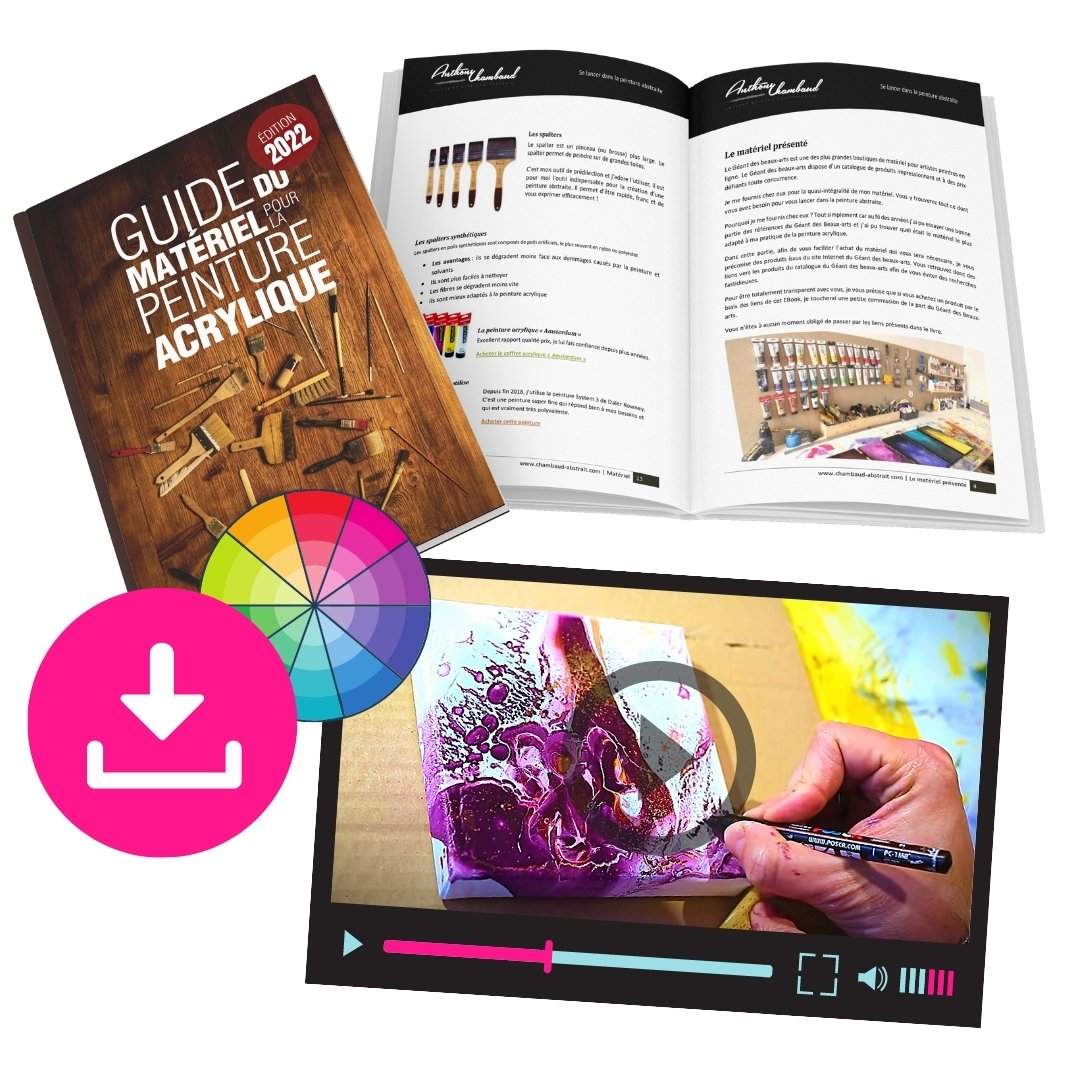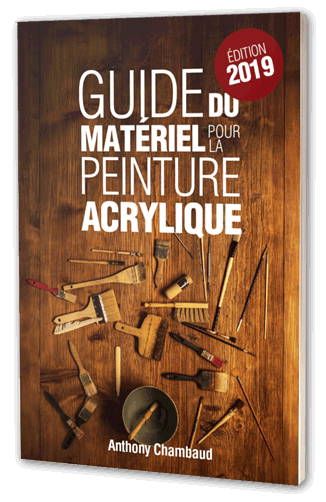(To see the video, click on the play button above)
Setting a price for your first paintings is a real ordeal, and it’s often difficult to find a real method of calculation, as the many cases differ.
However, there are a number of criteria that can help you define a price that’s right for your artistic practice and situation.
First and foremost: Sales mean professional status
If you wish to sell and are domiciled in France, you must declare yourself for tax and social security purposes. To find out more, check out my article & video on how to declare yourself as an MDA (Maison des artistes) painter.
Criteria 1: Manufacturing costs / Materials
A first approach is to take into account the cost of your material to define the selling price of your painting.
For example, if you’re a painter, here are the materials you may need to create your painting:
- Your canvas / stretcher
- Your brushes, spalters, knives
- Paints & mediums
- Varnishes, fasteners, shipping, etc.
When you add up all these different costs, you will have a minimum amount which will be the first basis for defining your selling price: Do not sell your painting for less than this amount.
Note: Refunding your equipment is a first step, but I’d still advise you to raise the price, since it’s your work you’re selling, not your equipment. After that, it really depends on your objectives: many just want to be able to pay off their equipment.
Criterion no. 2: Format
In most cases, the larger the format of your painting, the higher your price (for any equivalent technique).
From this, you can calculate the price of your painting according to the different sizes of your works.
There’s a technique known in the art world as calcul au point.
The aim is to define an amount for your point and multiply it by a number corresponding to the format (see table).

Here’s a concrete example: I’m making a 100 x 81 painting and my rib is 20. So the price of my painting will be 40 x 20 or 800€.
If your format is more modern: square format, for example, you just need to get closer to one of the formats on the list. (There are also different calculation methods, which I won’t go into here.)
Personally, I don’t use this technique, which makes things simpler, and I’m not a fan of the odds principle.
But this calculation method is popular and used by many artists, especially those with a high profile.
Criterion 3: Technique
Technique can play an important role in the price of your paintings.
There is a hierarchy of artistic techniques.
An oil painting can be more expensive than an acrylic painting, and an acrylic painting is often more expensive than a drawing.
A unique work will be more unique than a mass-produced work. etc.
Criteria 4: Your artistic background
This is one of the most important criteria that will naturally influence all the others.
It’s easy to understand that the price of your paintings will vary depending on :
- Your artistic development: Are you a beginner? or confirmed with 30 years’ experience?
- Your track record: Awards, exhibitions (well-known galleries), etc.
- From your experience, technique & apprenticeship in a renowned art school.
Criteria 5: The market
Depending on periods, trends and artists, it’s interesting to look at what’s happening on the art market to define a price.
This may be a good idea, provided you do it right.
Let me explain:
For example, you’re just starting out in abstract acrylic painting and you’ve produced a few successful paintings.
You want to sell them, so you approach artists you find on the Internet doing the same thing.
Many compare themselves to the first artist they find on the Internet and base their prices on theirs. This is a serious mistake, because in most cases, the artist in question will have experience, a certain notoriety and a greater or lesser number of paintings sold. So as a beginner, it’s not possible to model yourself on this type of artist, because it won’t work.
It is very important to check the following points:
- Does this artist have the same experience as you?
- Did he start painting at about the same time as you?
- Is his equipment & technique quite similar to yours?
- Do you have the same skills & qualifications?
- etc.
Mistakes not to be made :
Here are a few mistakes not to make, drawn from my own experience.
Selling your art
The transition from amateur artist to professional is always unsettling. It’s often very hard to put a price on your first painting.
As a result, it’s possible not to feel legitimate and to make the mistake of lowering the sale price too much.
For example, in my case, I sold my first painting for €39, an acrylic on canvas, size 40cm x 80cm. And of course, looking back, I realize that it was far too low…
Price too low = lack of credibility
This is an aspect that is often overlooked, but put yourself in a buyer’s shoes for a moment:
You’ve fallen in love with a canvas painting in a decent format, and the moment you see the price… 39€ !
You’ll immediately think there’s a problem, that it’s a copy or a printed canvas. So it’s rather off-putting.
If you want to make yourself and your art credible, you have to set a price that is credible too.
Overestimate the price of your paintings
On the other hand, overconfidence can lead you to set the price of your first sales far too high.
It’s important not to jump the gun, and to be aware that you can’t match the prices of a renowned Master who has produced many works over a long career.
Calculate the price of a painting as a function of time spent
Perhaps you’d like to align your prices with the time spent on your work. This is understandable, because in the final analysis, this is how we define the prices of various services.
But that’s a real mistake! We’re talking about art here, not car repair.
Indeed, it’s not the time spent on a canvas that makes it a masterpiece.
To illustrate this parallel, I love this quote from Rénoir: “This drawing took me five minutes, but it took me sixty years to do it.”
What about you?
What about you? How do you calculate the price of your works? Please share your story with us in the comments below.
Pack offert : Techniques, matériel & guide
Pour vous lancer dans la peinture abstraite dans de bonnes conditions, je vous offre ce pack comprenant mon guide du matériel, un cours de peinture abstraite et une avalanche de conseils !

Continuer et télécharger









 Recevez votre Pack du peintre débutant
Recevez votre Pack du peintre débutant